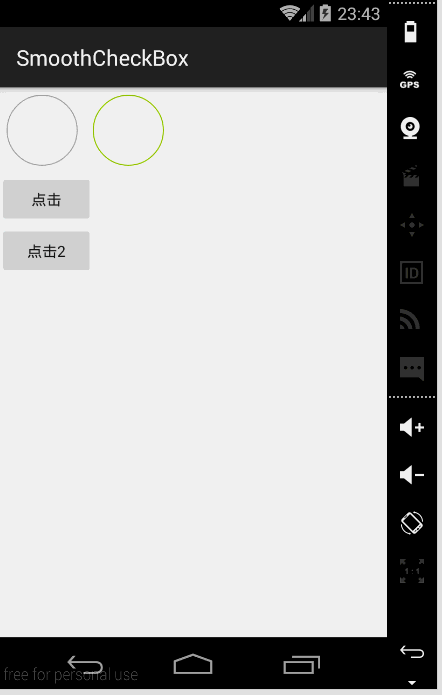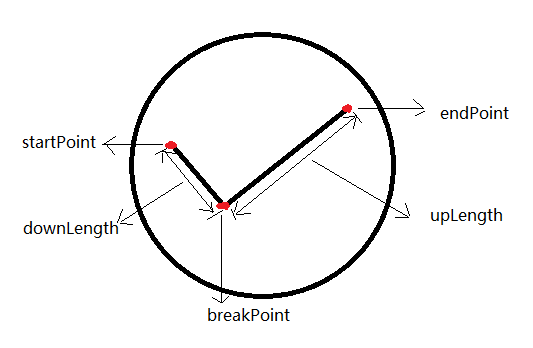1
2
3
4
5
6
7
8
9
10
11
12
13
14
15
16
17
18
19
20
21
22
23
24
25
26
27
28
29
30
31
32
33
34
35
36
37
38
39
40
41
42
43
44
45
46
47
48
49
50
51
52
53
54
55
56
57
58
59
60
61
62
63
64
65
66
67
68
69
70
71
72
73
74
75
76
77
78
79
80
81
82
83
84
85
86
87
88
89
90
91
92
93
94
95
96
97
98
99
100
101
102
103
104
105
106
107
108
109
110
111
112
113
114
115
116
117
118
119
120
121
122
123
124
125
126
127
128
129
130
131
132
133
134
135
136
137
138
139
140
141
142
143
144
145
146
147
148
149
150
151
152
153
154
155
156
157
158
159
160
161
162
163
164
165
166
167
168
169
170
171
172
173
174
175
176
177
178
179
180
181
182
183
184
185
186
187
188
189
190
191
192
193
194
195
196
197
198
199
200
201
202
203
204
205
206
207
208
209
210
211
212
213
214
215
216
217
218
219
220
221
222
223
224
225
226
227
228
229
230
231
232
233
234
235
236
237
238
239
240
241
242
243
244
245
246
247
248
249
250
251
252
253
254
255
256
257
258
259
260
261
262
263
264
265
266
267
268
269
270
271
272
273
274
275
276
277
278
279
280
281
282
283
284
285
286
287
288
289
290
291
292
293
294
295
296
297
298
299
300
301
302
303
304
305
306
307
308
309
310
311
312
313
314
315
316
317
318
| public class SmoothCheckBox extends View implements View.OnClickListener {
private long duration;
private float mStrokeWidth;
private float mTickWidth;
private Paint trimPaint;
private Paint borderPaint;
private Paint tickPaint;
private float defaultStrikeWidth;
private float defaultTickWidth;
private int mWidth;
private int mHeight;
private int borderColor;
private int trimColor;
private int tickColor;
private int mRadius;
private int center;
private boolean isChecked;
private float downLength;
private float upLength;
private float totalLength;
private OnCheckedChangeListener listener;
private ValueAnimator mValueAnimator;
private ValueAnimator mTickValueAnimator;
private float animatedValue;
private float tickValue;
private Point startPoint = new Point();
private Point breakPoint = new Point();
private Point endPoint = new Point();
private static final String TAG = "SmoothCheckBox";
private static final String KEY_INSTANCE_STATE = "InstanceState";
private Path path = new Path();
public void setOnCheckedChangeListener(OnCheckedChangeListener listener) {
this.listener = listener;
}
public SmoothCheckBox(Context context) {
this(context, null);
}
public SmoothCheckBox(Context context, AttributeSet attrs) {
this(context, attrs, 0);
}
public SmoothCheckBox(Context context, AttributeSet attrs, int defStyleAttr) {
super(context, attrs, defStyleAttr);
TypedArray a = getContext().obtainStyledAttributes(attrs, R.styleable.SmoothCheckBox);
duration = a.getInt(R.styleable.SmoothCheckBox_duration, 600);
defaultStrikeWidth = TypedValue.applyDimension(TypedValue.COMPLEX_UNIT_DIP, 1, getResources().getDisplayMetrics());
mStrokeWidth = a.getDimension(R.styleable.SmoothCheckBox_strikeWidth, defaultStrikeWidth);
defaultTickWidth = TypedValue.applyDimension(TypedValue.COMPLEX_UNIT_DIP, 2, getResources().getDisplayMetrics());
mTickWidth = a.getDimension(R.styleable.SmoothCheckBox_tickWidth, defaultTickWidth);
borderColor = a.getColor(R.styleable.SmoothCheckBox_borderColor, getResources().getColor(android.R.color.darker_gray));
trimColor = a.getColor(R.styleable.SmoothCheckBox_trimColor, getResources().getColor(android.R.color.holo_green_light));
tickColor = a.getColor(R.styleable.SmoothCheckBox_tickColor, getResources().getColor(android.R.color.white));
a.recycle();
trimPaint = new Paint(Paint.ANTI_ALIAS_FLAG);
trimPaint.setStyle(Paint.Style.FILL);
trimPaint.setColor(trimColor);
borderPaint = new Paint(Paint.ANTI_ALIAS_FLAG);
borderPaint.setStrokeWidth(mStrokeWidth);
borderPaint.setColor(borderColor);
borderPaint.setStyle(Paint.Style.STROKE);
tickPaint = new Paint(Paint.ANTI_ALIAS_FLAG);
tickPaint.setColor(tickColor);
tickPaint.setStyle(Paint.Style.STROKE);
tickPaint.setStrokeCap(Paint.Cap.ROUND);
tickPaint.setStrokeWidth(mTickWidth);
setOnClickListener(this);
}
@Override
protected void onMeasure(int widthMeasureSpec, int heightMeasureSpec) {
super.onMeasure(widthMeasureSpec, heightMeasureSpec);
int widthSize = MeasureSpec.getSize(widthMeasureSpec);
int widthMode = MeasureSpec.getMode(widthMeasureSpec);
if (widthMode == MeasureSpec.EXACTLY) {
mWidth = widthSize;
} else {
mWidth = 40;
}
int heightSize = MeasureSpec.getSize(heightMeasureSpec);
int heightMode = MeasureSpec.getMode(heightMeasureSpec);
if (heightMode == MeasureSpec.EXACTLY) {
mHeight = heightSize;
} else {
mHeight = 40;
}
setMeasuredDimension(mWidth, mHeight);
int size = Math.min(mWidth, mHeight);
center = size / 2;
mRadius = (int) ((size - mStrokeWidth) / 2 / 1.2f);
startPoint.set(center * 14 / 30, center * 28 / 30);
breakPoint.set(center * 26 / 30, center * 40 / 30);
endPoint.set(center * 44 / 30, center * 20 / 30);
downLength = (float) Math.sqrt(Math.pow(startPoint.x - breakPoint.x, 2f) + Math.pow(startPoint.y - breakPoint.y, 2f));
upLength = (float) Math.sqrt(Math.pow(endPoint.x - breakPoint.x, 2f) + Math.pow(endPoint.y - breakPoint.y, 2f));
totalLength = downLength + upLength;
}
@Override
protected void onDraw(Canvas canvas) {
super.onDraw(canvas);
canvas.save();
drawBorder(canvas);
drawTrim(canvas);
if (isChecked) {
drawTick(canvas);
}
canvas.restore();
}
@Override
protected Parcelable onSaveInstanceState() {
Bundle bundle = new Bundle();
bundle.putParcelable(KEY_INSTANCE_STATE, super.onSaveInstanceState());
bundle.putBoolean(KEY_INSTANCE_STATE, isChecked);
return bundle;
}
@Override
protected void onRestoreInstanceState(Parcelable state) {
if (state instanceof Bundle) {
Bundle bundle = (Bundle) state;
boolean isChecked = bundle.getBoolean(KEY_INSTANCE_STATE);
setChecked(isChecked);
super.onRestoreInstanceState(bundle.getParcelable(KEY_INSTANCE_STATE));
return;
}
super.onRestoreInstanceState(state);
}
private void toggle() {
isChecked = !isChecked;
if (listener != null) {
listener.onCheckedChanged(this, isChecked);
}
if (isChecked) {
checkedAnimation();
} else {
uncheckedAnimation();
}
}
private void checkedAnimation() {
animatedValue = 0f;
tickValue = 0f;
mValueAnimator = ValueAnimator.ofFloat(0f, 1.2f, 1f).setDuration(2 * duration / 5);
mValueAnimator.setInterpolator(new AccelerateDecelerateInterpolator());
mTickValueAnimator = ValueAnimator.ofFloat(0f, 1f).setDuration(3 * duration / 5);
mTickValueAnimator.setInterpolator(new LinearInterpolator());
mTickValueAnimator.addUpdateListener(new ValueAnimator.AnimatorUpdateListener() {
@Override
public void onAnimationUpdate(ValueAnimator valueAnimator) {
tickValue = (float) valueAnimator.getAnimatedValue();
postInvalidate();
}
});
mValueAnimator.addUpdateListener(new ValueAnimator.AnimatorUpdateListener() {
@Override
public void onAnimationUpdate(ValueAnimator valueAnimator) {
animatedValue = (float) valueAnimator.getAnimatedValue();
postInvalidate();
}
});
mValueAnimator.addListener(new AnimatorListenerAdapter() {
@Override
public void onAnimationEnd(Animator animation) {
mTickValueAnimator.start();
Log.i(TAG," mTickValueAnimator.start();");
}
});
mValueAnimator.start();
}
private void uncheckedAnimation() {
animatedValue = 0f;
mValueAnimator = ValueAnimator.ofFloat(1f, 0f).setDuration(2 * duration / 5);
mValueAnimator.setInterpolator(new AccelerateInterpolator());
mValueAnimator.addUpdateListener(new ValueAnimator.AnimatorUpdateListener() {
@Override
public void onAnimationUpdate(ValueAnimator valueAnimator) {
animatedValue = (float) valueAnimator.getAnimatedValue();
postInvalidate();
}
});
mValueAnimator.start();
}
private void drawTick(Canvas canvas) {
float temp = tickValue * totalLength;
Log.i(TAG, "temp:" + temp + "downlength :" + downLength);
if (Float.compare(tickValue, 0f) == 0) {
Log.i(TAG, "startPoint : " + startPoint.x + ", " + startPoint.y);
path.reset();
path.moveTo(startPoint.x, startPoint.y);
}
if (temp > downLength) {
path.moveTo(startPoint.x, startPoint.y);
path.lineTo(breakPoint.x, breakPoint.y);
Log.i(TAG, "endPoint : " + endPoint.x + ", " + endPoint.y);
path.lineTo((endPoint.x - breakPoint.x) * (temp - downLength) / upLength + breakPoint.x, (endPoint.y - breakPoint.y) * (temp - downLength) / upLength + breakPoint.y);
} else {
Log.i(TAG, "down x : " + (breakPoint.x - startPoint.x) * temp / downLength + ",down y: " + (breakPoint.y - startPoint.y) * temp / downLength);
path.lineTo((breakPoint.x - startPoint.x) * temp / downLength + startPoint.x, (breakPoint.y - startPoint.y) * temp / downLength + startPoint.y);
}
canvas.drawPath(path, tickPaint);
}
private void drawBorder(Canvas canvas) {
float temp;
if (animatedValue > 1f) {
temp = animatedValue * mRadius;
} else {
temp = mRadius;
}
canvas.drawCircle(center, center, temp, borderPaint);
}
private void drawTrim(Canvas canvas) {
canvas.drawCircle(center, center, (mRadius - mStrokeWidth) * animatedValue, trimPaint);
}
@Override
public void onClick(View view) {
toggle();
}
public boolean isChecked() {
return isChecked;
}
public void setChecked(boolean isChecked) {
this.setChecked(isChecked, false);
}
public void setChecked(boolean isChecked, boolean isAnimation) {
this.isChecked = isChecked;
if (isAnimation) {
if (isChecked) {
checkedAnimation();
} else {
uncheckedAnimation();
}
} else {
animatedValue = isChecked ? 1f : 0f;
tickValue = 1f;
invalidate();
}
if (listener != null) {
listener.onCheckedChanged(this, isChecked);
}
}
public interface OnCheckedChangeListener {
void onCheckedChanged(SmoothCheckBox smoothCheckBox, boolean isChecked);
}
}
|

